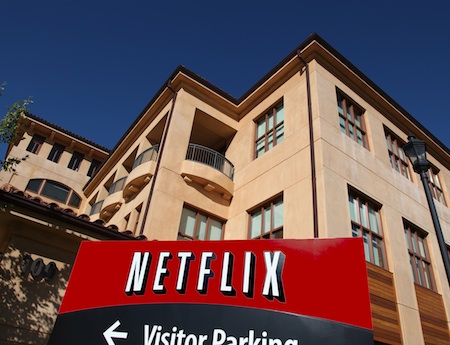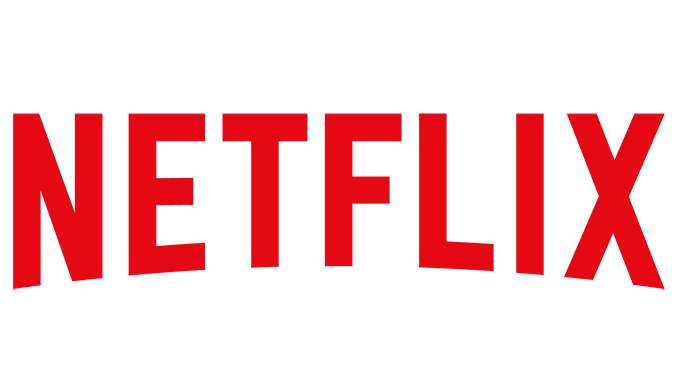Netflix Miss Has Wall St. Streaming Cautiously

Netflix stock dropped after it failed to meet expectations for subscriber growth in the second quarter but analysts are mixed on how cautious investors should be about the high-flying streamer in the longer term.
Judging from early reports, the bulls are a little less bullish, while those who doubt that Netflix can justify its already high stock price have a reason to say “I told you so.”

The number of Netflix subscribers the U.S. fell in the second quarter compared to Q1, the first drop since 2011. International sub growth was slower than forecast.
Analyst Jeff Wlodarczak of Pivotal Research headlined his report “Let’s Not Make a Mountain Out of a Molehill” and raised his target for Netflix stock to $515 per share.
“A healthy price increase in 2Q (highlighted by % growth in 2Q U.S. ARPU) + increasing effects of 2Q seasonality on a materially larger subscriber base + a less impactful content slate drove 2Q subscribers below expectations. However, the healthy price increases drove overall better than expected financial results in 2Q and guidance for 3Q,” Wlodarczak said.
“A clearly strong 3Q programming slate and the disappearance of price hike related churn in 3Q drove Netflix’s reasonable forecast for a major (much better than expected) rebound in subscriber growth in the 2H,” the analyst said.
“We are incrementally less bullish. But we remain Bulls, both medium-term and long-term, said analyst Mark Mahaney of RBC Capital Market said.
The smarter way to stay on top of broadcasting and cable industry. Sign up below
“This isn’t our first rodeo, and this isn’t Netflix’s first miss.,” Mahaney said. “But Q2 results do highlight the importance of a strong content slate and at least raise the question of whether NFLX needs to be more restrained with price increase pacing.”
Some analysts, including Mahaney warned that Netflix stock could be impacted more than it should be when Disney+ gets launched later this year.
“Management suggested a variety of factors for Q2 sub miss, including pull-forward into Q1, content slate, and price increases,” said Todd Juenger of Sanford C. Bernstein. “We expect investors will mostly blame price increases. If so, the good news is, those are mostly behind us, management says churn has returned to previous levels, and first few weeks of Q3 net adds have significantly accelerated.”
But Juenger said the 2Q earnings report downt change the investment thesis that has him rating Netflix as “Outperform.”
“Does it make us more nervous? Of course. Especially given the timing of Disney+ launch. We don’t think the Disney+ launch will have anything to do with Netflix's success or failure. But if Netflix misses subs in the quarters after Disney+ launches, the market will make the correlation anyway, and we expect the downside effect on Netflix stock will be several times more than usual,” Juenger said.
MIchael Nathanson of MoffettNathanson Reserach, who has been Neutral on Netflix, headlined his report “Doubters of the World Unite!”
“While we have never doubted the quality of the Netflix product offering, we have recently had a hard time finding comfort in Netflix’s equity value,” said Nathanson.
The second-quarter report should dampen some of the more ebullient long-term forecasts for Netflix, he said.
“The S-Curve in the U.S. may be finally be flattening after all these years of growth. As such, it will increased doubts about Netflix’s final resting subscriber base. Maybe it is 80 million vs. the 88.4 million in our prior valuation case,” Nathanson said.
“Te acknowledgement that the price increase hurt subscriber growth in the quarter also brings into question Netflix’s ultimate pricing power,” Nathanson said. “As more studios pull content from Netflix, the platform moves from being a digital video store in the cloud with unlimited versions of all your favorite shows to a premium cable network on steroids.”
Nathanson lower his Netflix target price by $35 to $220. “ Even under a “Blue Sky” scenario, we still can’t justify the stock price today,” he said.
Jon has been business editor of Broadcasting+Cable since 2010. He focuses on revenue-generating activities, including advertising and distribution, as well as executive intrigue and merger and acquisition activity. Just about any story is fair game, if a dollar sign can make its way into the article. Before B+C, Jon covered the industry for TVWeek, Cable World, Electronic Media, Advertising Age and The New York Post. A native New Yorker, Jon is hiding in plain sight in the suburbs of Chicago.

